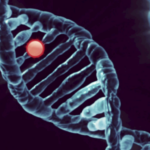Bioinformatic Analysis stands at the crossroads of biology and computer science, fundamentally altering how we analyze and interpret biological data. As one of the cornerstones of this rapidly growing field, bioinformatic analysis empowers scientists to derive valuable insights from vast amounts of genomic information. In this in-depth blog post, we’ll explore the world of bioinformatic analysis, shedding light on its importance, methodologies, and practical applications.
An Introduction to Bioinformatic Analysis
Bioinformatic analysis, sometimes referred to as computational biology, involves a broad spectrum of techniques and tools used to decode biological data. By integrating biological knowledge with statistical analysis and computational algorithms, bioinformatics enables the extraction of significant information from diverse datasets. This approach has revolutionized genomics, helping researchers decode complex biological processes, uncover gene functions, and explore the molecular intricacies of life.
With the advent of high-throughput technologies like next-generation sequencing, the volume of biological data has exploded, creating new challenges in data management and analysis. Bioinformatic analysis serves as a crucial tool, allowing researchers to make sense of this data and derive meaningful insights. Through the application of advanced computational methods, bioinformaticians can uncover the mysteries hidden within the vast genomic landscape.
Data Acquisition and Preprocessing in Bioinformatic Analysis
Before diving into any bioinformatic analysis, acquiring and preprocessing raw biological data is essential. This section will explore the various sources of biological data, including genomics, transcriptomics, and proteomics. We’ll discuss how to retrieve data from public repositories like the National Center for Biotechnology Information (NCBI) and the European Bioinformatics Institute (EMBL-EBI). Additionally, we’ll cover the critical steps of data quality control, cleaning, transformation, and normalization to ensure the data is reliable and ready for analysis. Handling large-scale datasets also presents unique challenges, which we will address by providing insights into effective data management strategies.
The Role of Sequence Analysis in Bioinformatic Analysis
Sequences are at the heart of bioinformatic analysis, offering a wealth of information about genes, proteins, and other biomolecules. In this section, we will delve into DNA sequence analysis, exploring techniques for sequence alignment and comparison to identify similarities and differences among DNA sequences. We will also cover motif and pattern discovery, helping to identify conserved regions and regulatory elements. Additionally, we will discuss the identification of genetic variants, such as single-nucleotide polymorphisms (SNPs) and insertions/deletions (indels), and their role in genetic diversity and disease association.
RNA sequence analysis is another critical component, where we will explore transcriptome assembly and quantification methods. Differential expression analysis will be discussed, highlighting how to identify genes that are differentially expressed under specific conditions. We’ll also look at alternative splicing analysis, which reveals the complex mechanisms of gene regulation, and the identification of non-coding RNAs and their roles in various biological processes.
Protein sequence analysis rounds out this section, where we will cover methods for predicting protein structures, crucial for understanding protein function and drug design. We’ll discuss techniques for protein characterization and function prediction, and analyze protein-protein interactions to unravel the complex web of molecular interactions that drive cellular processes.
Structural Bioinformatics: Understanding Biomolecular Structures
The three-dimensional structure of biomolecules is fundamental to understanding their functions and interactions. This section focuses on structural bioinformatics, which predicts and analyzes the structures of proteins and other biomolecules. We will cover protein structure prediction methods, including homology modeling and ab initio techniques, and discuss how to validate and assess the quality of predicted structures. Additionally, we’ll explore structural alignment and comparison methods to identify similarities and evolutionary relationships between different protein structures. Finally, we will examine protein-ligand interactions, a crucial aspect of drug discovery and design.
Functional Genomics and Systems Biology in Bioinformatic Analysis
Understanding how genes and proteins work together in complex biological systems is essential for comprehending broader biological processes. This section explores functional genomics and systems biology approaches, including Gene Ontology (GO) analysis, which provides a systematic framework for annotating gene functions. We will also discuss pathway and network analysis, which helps uncover interconnected networks of genes and proteins that drive biological processes. The integration of multi-omics data will be addressed, showcasing the power of combining different types of biological data for a comprehensive understanding of biological systems. Furthermore, we’ll look into biomarker discovery and validation, crucial for diagnostics and personalized medicine, and explore how predictive modeling and machine learning are paving the way for data-driven discoveries in bioinformatics.
Challenges in Bioinformatic Analysis
While bioinformatic analysis offers immense potential, it also presents significant challenges. Managing and analyzing large-scale biological datasets is one of the primary hurdles. The rapid advancement of technologies like next-generation sequencing has led to an overwhelming amount of data, requiring efficient computational resources, sophisticated algorithms, and robust data management strategies.
Another challenge lies in integrating diverse data types. Biological systems are complex, and understanding them necessitates the integration of multiple data sources, such as genomics, transcriptomics, proteomics, and metabolomics. This integration poses challenges in data standardization, normalization, and the development of computational tools capable of handling multi-omics data effectively.
Additionally, the fast-paced evolution of genomics and bioinformatics often outstrips the development of suitable analytical methods and tools. Keeping up with these advancements while ensuring the availability of user-friendly, scalable, and accurate bioinformatic analysis tools remains a significant challenge. Ethical considerations surrounding data privacy, sharing, and the responsible use of biological information also need to be addressed.
Overview of the Bioinformatic Analysis Process
The bioinformatic analysis process follows a general flow that includes several interconnected steps. While the specifics may vary depending on the research question and data type, the fundamental steps remain consistent. The process typically begins with data acquisition, where researchers retrieve or generate raw biological data. This is followed by data preprocessing, which involves quality control, cleaning, transformation, and normalization to ensure the data is reliable and suitable for analysis.
Once the data is preprocessed, the actual analysis begins. This often involves sequence analysis, examining DNA, RNA, or protein sequences for alignment, comparison, motif discovery, and variant identification. Structural bioinformatics focuses on predicting and analyzing the three-dimensional structures of proteins and other biomolecules, including methods like structure prediction, validation, alignment, and analysis of protein-ligand interactions.
Functional genomics and systems biology approaches aim to understand the functions and interactions of genes and proteins on a broader scale, including gene ontology analysis, pathway and network analysis, integration of multi-omics data, biomarker discovery, and predictive modeling using machine learning techniques.
Essential Tools and Resources for Bioinformatic Analysis
Bioinformatic analysis relies heavily on a variety of tools and resources that assist in data analysis and interpretation. Numerous databases, software packages, and algorithms have been developed to meet the diverse needs of bioinformaticians. Public repositories like the National Center for Biotechnology Information (NCBI), the European Bioinformatics Institute (EMBL-EBI), and the Universal Protein Resource (UniProt) provide access to vast amounts of biological data, including genomic sequences, gene expression profiles, protein structures, and functional annotations.
Additionally, specialized software packages and programming libraries are designed specifically for bioinformatic analysis. These tools offer functionalities for sequence alignment, motif discovery, structure prediction, pathway analysis, and machine learning. Examples of widely used software packages include BLAST, Bowtie, MEME Suite, PyMOL, Cytoscape, and R/Bioconductor.
Online platforms and resources also offer interactive interfaces, tutorials, and documentation to facilitate the use and understanding of bioinformatics tools. Resources like Galaxy, Bioinformatics.org, and BioStars provide collaborative environments where bioinformaticians can share knowledge, seek help, and collaborate on various projects.
Data Acquisition and Preprocessing in Bioinformatic Analysis
In bioinformatic analysis, the journey begins with data acquisition and preprocessing. The quality and reliability of the data are crucial for obtaining accurate and meaningful results. This section explores the sources of biological data, the process of retrieving data from public repositories, data quality control and cleaning techniques, data transformation and normalization methods, and considerations for handling large-scale datasets.
Sequence Analysis in Bioinformatic Analysis
Sequences are at the core of bioinformatic analysis, providing crucial insights into genes, proteins, and other biomolecules. This section explores various aspects of sequence analysis, including DNA sequence analysis, RNA sequence analysis, and protein sequence analysis, focusing on alignment, comparison, motif discovery, and variant identification.
Structural Bioinformatics in Bioinformatic Analysis
Structural bioinformatics is a field focused on predicting and analyzing the three-dimensional structures of proteins and other biomolecules. This section explores protein structure prediction methods, validation and quality assessment, structural alignment and comparison, analysis of protein-ligand interactions, and the role of structural bioinformatics in drug discovery and design.
Functional Genomics and Systems Biology in Bioinformatic Analysis
Functional genomics and systems biology approaches aim to understand the functions and interactions of genes, proteins, and other biomolecules on a broader scale. This section explores key aspects such as gene ontology analysis, pathway and network analysis, integration of multi-omics data, biomarker discovery and validation, and the role of predictive modeling and machine learning in bioinformatics.
Future Directions and Challenges in Bioinformatic Analysis
As bioinformatic analysis continues to evolve, exciting future directions and challenges lie ahead. This final section explores emerging trends and technologies, ethical considerations and data privacy, the importance of collaboration and data sharing, and the ongoing challenges faced by bioinformaticians.
Conclusion: The Future of Bioinformatic Analysis
Bioinformatic analysis is continuously evolving, driven by technological advancements, emerging trends, and the growing volume of biological data. By leveraging computational methods, statistical approaches, and interdisciplinary collaborations, bioinformaticians can unravel the complexities of biological systems, uncover novel insights, and contribute to advances in medicine, agriculture, and environmental sciences.
To overcome future challenges in bioinformatic analysis, continuous innovation, ethical considerations, and the promotion of open science practices are essential. Harnessing emerging technologies, embracing interdisciplinary collaborations, ensuring data privacy, and promoting responsible data sharing are key to maximizing the potential of bioinformatics and driving transformative discoveries.
Overall, bioinformatic analysis remains a powerful tool in biological research, enabling scientists to extract meaningful insights from vast amounts of genomic information. With continued advancements and concerted efforts, bioinformatics will continue to revolutionize our understanding of life, health, and the intricate mechanisms governing biological systems.
External Links:





